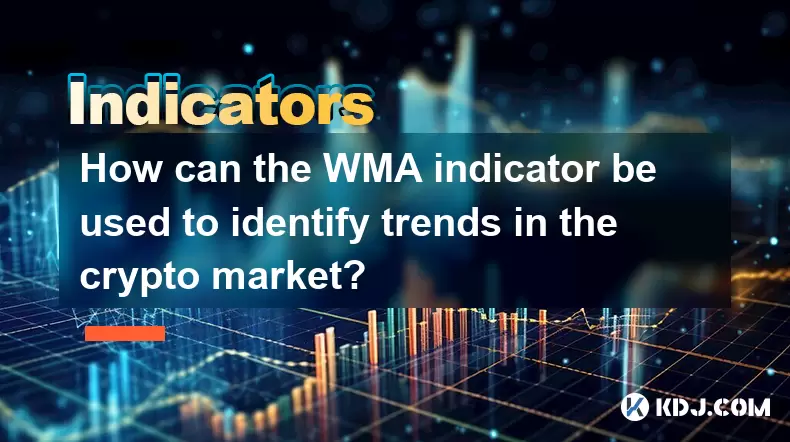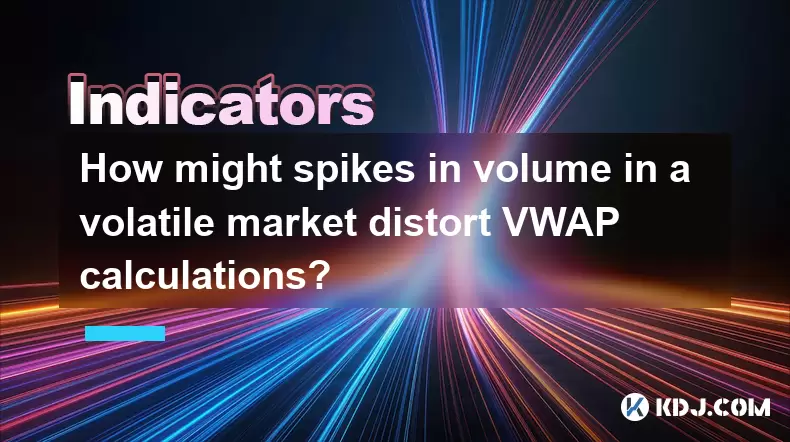-
 Bitcoin
Bitcoin $117700
-0.03% -
 Ethereum
Ethereum $3805
0.49% -
 XRP
XRP $3.098
-1.00% -
 Tether USDt
Tether USDt $1.000
0.03% -
 BNB
BNB $792.8
-1.72% -
 Solana
Solana $177.9
-1.95% -
 USDC
USDC $1.000
0.02% -
 Dogecoin
Dogecoin $0.2202
-1.55% -
 TRON
TRON $0.3278
-2.92% -
 Cardano
Cardano $0.7641
-2.43% -
 Hyperliquid
Hyperliquid $42.21
-2.68% -
 Sui
Sui $3.758
-1.58% -
 Stellar
Stellar $0.4080
-3.21% -
 Chainlink
Chainlink $17.75
-0.33% -
 Bitcoin Cash
Bitcoin Cash $591.8
4.96% -
 Hedera
Hedera $0.2561
-3.09% -
 Avalanche
Avalanche $23.34
-4.24% -
 Litecoin
Litecoin $110.7
1.96% -
 UNUS SED LEO
UNUS SED LEO $8.956
-0.01% -
 Toncoin
Toncoin $3.410
0.79% -
 Ethena USDe
Ethena USDe $1.001
0.03% -
 Shiba Inu
Shiba Inu $0.00001288
-1.82% -
 Uniswap
Uniswap $10.07
-2.06% -
 Polkadot
Polkadot $3.807
-2.27% -
 Monero
Monero $308.2
-2.15% -
 Dai
Dai $1.000
0.03% -
 Bitget Token
Bitget Token $4.521
-0.30% -
 Pepe
Pepe $0.00001134
-1.52% -
 Cronos
Cronos $0.1457
0.65% -
 Aave
Aave $274.9
-2.47%
How can the WMA indicator be used to identify trends in the crypto market?
The Weighted Moving Average (WMA) helps crypto traders spot trends early by giving more weight to recent prices, making it ideal for volatile markets like Bitcoin and altcoins.
Jul 30, 2025 at 04:56 pm

Understanding the WMA Indicator in Cryptocurrency Trading
The Weighted Moving Average (WMA) is a technical analysis tool that assigns greater importance to recent price data, making it more responsive to new information compared to simple moving averages. In the volatile environment of the crypto market, where price shifts can occur rapidly due to news, sentiment, or macroeconomic factors, the WMA provides traders with a refined view of price momentum. Unlike the Simple Moving Average (SMA), which treats all data points equally, the WMA emphasizes recent closing prices by applying a weighting factor. This makes it particularly useful for identifying emerging trends before they are confirmed by lagging indicators.
For example, in a 10-day WMA, the most recent closing price is multiplied by 10, the previous day by 9, and so on, down to 1. These weighted values are summed and divided by the sum of the weights (55 in this case). The result is a line that hugs price action more closely than an SMA, offering earlier signals for potential trend changes.
How WMA Helps Identify Uptrends and Downtrends
To detect a bullish trend in cryptocurrencies like Bitcoin or Ethereum, traders observe the direction and positioning of the WMA line relative to the price candles on a chart. When the price consistently trades above the WMA line, and the WMA itself is sloping upward, this signals a potential uptrend. The steeper the slope, the stronger the momentum behind the upward movement.
Conversely, when the price remains below the WMA and the line is trending downward, this indicates a bearish phase. A key advantage of the WMA is its sensitivity. For instance, if Bitcoin’s price dips below its 20-day WMA after a prolonged rally, this could suggest weakening bullish momentum and a possible reversal. Traders often use this crossover as a signal to reevaluate long positions or consider short entries.
Using WMA Crossovers for Entry and Exit Signals
A common strategy involves combining two WMA lines of different periods, such as a short-term WMA (e.g., 10-day) and a longer-term WMA (e.g., 30-day). When the shorter WMA crosses above the longer one, it generates a golden cross, interpreted as a buy signal. When it crosses below, it forms a death cross, signaling a potential sell.
To apply this in a crypto trading platform like TradingView:
- Open a chart for your chosen cryptocurrency.
- Click on the "Indicators" button.
- Search for "Weighted Moving Average."
- Add two instances: one with a period of 10, another with 30.
- Observe the interaction between the two lines.
- Wait for the 10-period WMA to cross above the 30-period WMA while price is near or above the shorter WMA.
- Confirm the signal with volume spikes or candlestick patterns like bullish engulfing.
This method is especially effective on 4-hour or daily timeframes, where false signals are less frequent compared to lower timeframes.
Combining WMA with Other Indicators for Confirmation
Relying solely on the WMA can lead to false signals during sideways or choppy markets. To improve accuracy, traders combine it with complementary tools. The Relative Strength Index (RSI) helps determine whether a market is overbought or oversold. If the WMA suggests an uptrend but the RSI is above 70, the rally may be overextended, warranting caution.
Another effective pairing is with volume indicators. A rising WMA accompanied by increasing trading volume strengthens the validity of a trend. For example, if Ethereum’s price rises above its 14-day WMA on unusually high volume, this confirms strong buyer interest.
- Apply the WMA (14-period) on a candlestick chart.
- Overlay the RSI (14-period) in a separate panel below.
- Check if the WMA is rising and price is above it.
- Verify that RSI is between 50 and 70 (not overbought).
- Confirm with rising volume bars.
This multi-layered approach reduces the risk of acting on misleading signals.
Adjusting WMA Periods for Different Crypto Volatility Levels
Cryptocurrencies vary in volatility. Bitcoin tends to be less erratic than altcoins like Solana or Dogecoin. Therefore, the optimal WMA period differs across assets. For high-volatility altcoins, shorter periods like 5 or 7 can capture quick swings. For Bitcoin, periods of 20 or 30 may be more effective to filter out noise.
To customize WMA settings:
- Right-click on the WMA line in your charting tool.
- Select "Settings" or "Format."
- Adjust the "Length" parameter based on the asset.
- Test different values using backtesting features.
- Compare results across historical price movements.
Traders often use multiple WMAs simultaneously—such as 7, 14, and 28—to identify short, medium, and long-term trends. When all three align upward, the bullish case strengthens.
Practical Example: Applying WMA to a Bitcoin Chart
Suppose you are analyzing Bitcoin on a daily chart in early 2024. You apply a 21-day WMA. Over several weeks, the price fluctuates around the line. Suddenly, Bitcoin closes decisively above the WMA, which begins to turn upward. This is your first clue of a potential trend shift.
Next, you notice the 7-day WMA crossing above the 21-day WMA. Volume increases by 30% compared to the 30-day average. RSI moves from 45 to 60, indicating building momentum without being overbought. These confluences suggest a high-probability long opportunity.
You set a stop-loss just below the WMA line and take partial profits as price extends. The WMA continues to act as dynamic support, allowing you to trail your stop and protect gains as the trend progresses.
Frequently Asked Questions
What is the difference between WMA and EMA in crypto trading?
While both the Weighted Moving Average (WMA) and Exponential Moving Average (EMA) prioritize recent prices, the EMA applies a smoothing constant that gives exponentially decreasing weights, whereas the WMA uses a linear weighting scheme. The WMA may react slightly faster in sharp moves, but the EMA is more commonly integrated into standard trading platforms.
Can WMA be used on intraday crypto charts?
Yes, the WMA is effective on 15-minute or 1-hour charts for day trading. However, due to increased market noise, it’s advisable to combine it with support/resistance levels or order book data to avoid false signals during low-liquidity periods.
How do I choose the right WMA period for a specific cryptocurrency?
Start with standard periods like 14 or 20, then adjust based on backtesting. For highly volatile coins, test shorter periods (5–10). For stable large-cap cryptos like Bitcoin, use 20–30. The goal is to balance responsiveness with reliability.
Is WMA suitable for ranging markets?
The WMA performs poorly in sideways markets, where price oscillates around the line, generating frequent false crossovers. It is best used in trending environments. To identify ranging conditions, pair WMA with Bollinger Bands or the Average Directional Index (ADX).
Disclaimer:info@kdj.com
The information provided is not trading advice. kdj.com does not assume any responsibility for any investments made based on the information provided in this article. Cryptocurrencies are highly volatile and it is highly recommended that you invest with caution after thorough research!
If you believe that the content used on this website infringes your copyright, please contact us immediately (info@kdj.com) and we will delete it promptly.
- LYNO Token Presale: AI Arbitrage Revolution in DeFi
- 2025-07-31 05:11:11
- Pepecoin Successors: Can These Cryptocurrencies Make You a Millionaire?
- 2025-07-31 05:50:12
- AML Bitcoin Fraud: Cracking Down on Crypto Crime in the Big Apple and Beyond
- 2025-07-31 04:33:53
- Cardano (ADA) in 2025: Navigating Crypto's Future
- 2025-07-31 03:52:07
- Solana Meme Coin Price Prediction: Will the Frog Outleap the Dog?
- 2025-07-31 03:52:07
- Bitcoin's Bullish Outlook: CryptoQuant's Insights on Futures Market Cooling
- 2025-07-31 03:59:10
Related knowledge

How to use the AVL indicator to confirm a trend?
Jul 31,2025 at 10:25am
Understanding the AVL Indicator and Its ComponentsThe AVL indicator, also known as the Accumulation Volume Line, is a technical analysis tool that com...

How to use the AVL indicator with MACD for better signals?
Jul 31,2025 at 09:22am
Understanding the AVL Indicator and Its Role in Cryptocurrency TradingThe AVL indicator, also known as the Accumulation Volume Line, is a volume-based...

How to identify sell signals with the AVL indicator?
Jul 31,2025 at 07:09am
Understanding the AVL Indicator and Its Core ComponentsThe AVL indicator, also known as the Accumulation Volume Line, is a volume-based technical anal...

What are the best settings for the AVL indicator?
Jul 31,2025 at 10:04am
Understanding the AVL Indicator and Its PurposeThe AVL indicator, also known as the Accumulation Volume Line, is a technical analysis tool used in the...

How does the VWAP line help in identifying overbought and oversold market conditions?
Jul 31,2025 at 05:19am
Understanding the VWAP Line and Its Role in Technical AnalysisThe Volume Weighted Average Price (VWAP) is a critical tool used by traders within the c...

How might spikes in volume in a volatile market distort VWAP calculations?
Jul 31,2025 at 07:40am
Understanding VWAP and Its Core ComponentsVWAP, or Volume-Weighted Average Price, is a trading benchmark that gives the average price a cryptocurrency...

How to use the AVL indicator to confirm a trend?
Jul 31,2025 at 10:25am
Understanding the AVL Indicator and Its ComponentsThe AVL indicator, also known as the Accumulation Volume Line, is a technical analysis tool that com...

How to use the AVL indicator with MACD for better signals?
Jul 31,2025 at 09:22am
Understanding the AVL Indicator and Its Role in Cryptocurrency TradingThe AVL indicator, also known as the Accumulation Volume Line, is a volume-based...

How to identify sell signals with the AVL indicator?
Jul 31,2025 at 07:09am
Understanding the AVL Indicator and Its Core ComponentsThe AVL indicator, also known as the Accumulation Volume Line, is a volume-based technical anal...

What are the best settings for the AVL indicator?
Jul 31,2025 at 10:04am
Understanding the AVL Indicator and Its PurposeThe AVL indicator, also known as the Accumulation Volume Line, is a technical analysis tool used in the...

How does the VWAP line help in identifying overbought and oversold market conditions?
Jul 31,2025 at 05:19am
Understanding the VWAP Line and Its Role in Technical AnalysisThe Volume Weighted Average Price (VWAP) is a critical tool used by traders within the c...

How might spikes in volume in a volatile market distort VWAP calculations?
Jul 31,2025 at 07:40am
Understanding VWAP and Its Core ComponentsVWAP, or Volume-Weighted Average Price, is a trading benchmark that gives the average price a cryptocurrency...
See all articles

























































































